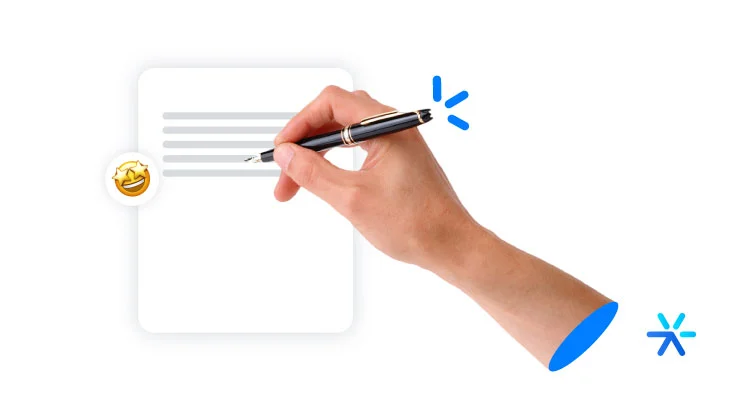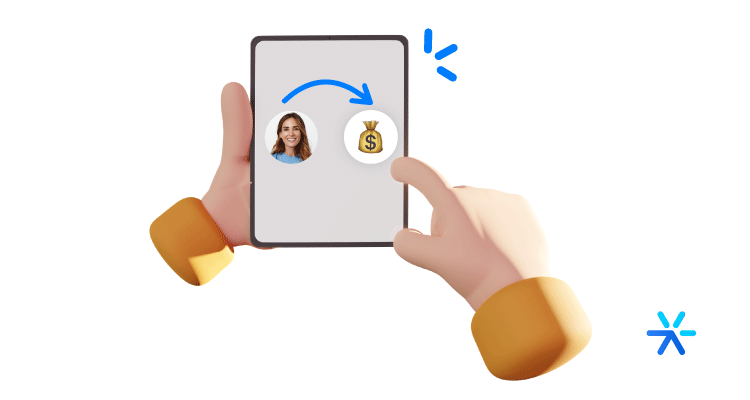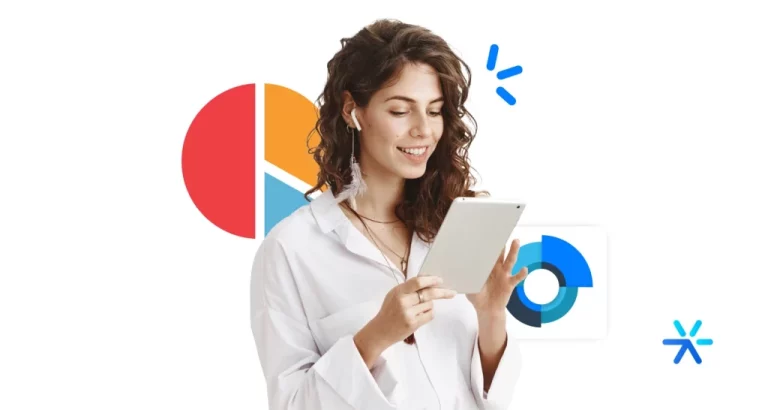Color Psychology in Marketing: What It Is + Strategies to Apply It
McDonald’s, iFood, KFC, and Burger King—all of these brands are related to food sales and, additionally, they all have red in their logos. Is this a coincidence? You can be sure it’s not.
Keep in mind that every little thing a company does has a purpose, especially when it comes to branding and visual identity.
That’s exactly what we’re going to talk about today as we dive deep into Color Psychology in Marketing.
Although it may seem like something chosen without much thought, when we look at a brand’s logo and visual identity, the colors are strategically selected to evoke feelings in people, enhancing results and attracting new customers.
Continue reading this article to understand why brands choose specific colors to represent them and what that means for customers.
Let’s go!
What Is Color Psychology?

Color Psychology is a study that seeks to understand how humans behave when exposed to colors.
This analysis aims to define the effects—meaning, the feelings and emotions people experience when seeing a specific color.
When we bring this study into marketing, the focus is to understand consumers’ impressions of a brand and whether the colors create a certain connection and help influence the decision the company desires.
Why Is Color Psychology Important in Marketing?
The numbers speak for themselves.
According to a study by Quick Sprout, 85% of customers say color is the main reason they buy a product or service.
Beyond that, the data also showed that color increases brand recognition by 80%, which is directly linked to consumer trust.
From this data, we can confirm that colors are crucial elements not only for branding and promotion but also for driving sales.
Below we have an infographic that presents data on consumers’ first impressions and the most memorable content formats. Check it out:
Other studies have also been conducted to better understand how colors affect consumer choices.
One of them is by author Robert Plutchik, who created a wheel of emotions and connected them to specific colors. From that, CopyPress developed an image showing all these feelings—take a look:
This wheel presents eight core emotions:
- Anger
- Fear
- Sadness
- Disgust
- Surprise
- Curiosity
- Acceptance
- Joy
How to Apply Color Psychology in Marketing

Color Psychology in Marketing will work differently for each business. So, there’s no universal step-by-step guide for applying this study to your brand.
However, there are a few key points to pay attention to when developing your company’s visual identity, as well as some tips to further optimize your strategy.
Let’s go!
Monitor Color Performance
Just because you like blue doesn’t mean it should automatically be your brand’s primary color.
You need to analyze everything about the color—its meaning, how its tones connect with your brand’s identity, and what emotions it triggers in your audience.
In materials like email marketing and landing pages, you can even run A/B tests to assess results and adapt your content and design based on performance.
Use a Color Palette that Matches Your Brand
Think about what your brand should represent to your audience. What do you want people to feel when they see your logo? Technology? Convenience? Comfort?
Once you’ve answered that, look for a color palette that conveys those feelings and aligns with your goals.
Always Prioritize the User Experience
You must combine colors that represent your brand with the experience you want users to have when visiting your website, blog, social media, and other channels.
Pay close attention to these points:
- Prefer colors that make reading easier and less tiring
- Analyze your persona’s favorite colors
- Be cautious with intense tones. Some colors can literally hurt the eyes—if you use them, do so sparingly and purposefully
- Always run tests

Choose Colors That Convert
Yes, some colors convert better than others, and this should be a part of your Color Psychology strategy.
Quick Sprout once again provides data showing the relationship between color, conversion, and user behavior:
- Colorful paid ads perform better than black-and-white versions
- Color perception differs by gender:
- Women prefer blue, purple, and green
- Men prefer blue, green, and black
- Least favorite colors:
- Women dislike orange, brown, and gray
- Men dislike brown, orange, and purple
- Changing your CTA button color can significantly impact click-through and conversion rates
Analyze How Colors Behave in Images
A crucial tip for your banners and images is to use complementary colors to highlight conversion elements.
The infographic below illustrates technical color characteristics—whether they’re primary, secondary, complementary, analogous, etc. Take a look:
Use Tools
Tools will be your best allies when choosing the right colors for your brand communication.
Here are some of them:
Adobe Color
Offers ready-made palettes and lets you create combinations of up to five colors
Material Design Colors
Helps find tonal variations and even generates the CSS code for your web project
ColourCode
Helps you find colors and provides the RGB code
ColorZilla
A plugin for Chrome and Firefox that lets you grab colors directly from your browser
Color Scheme Designer & Colour Lovers
Similar to Adobe Color, these platforms offer ready-made palettes or the option to create your own
What Does Each Color Mean?

To start understanding what each color represents, check out this infographic by The Logo Company, which shows the emotional impact of each color used in popular logos.
We learn that every color is linked to human behavior—and in marketing, it’s no different.
To make things even easier for marketers, the company No Film School compiled a list of colors and their associated meanings:
- Red: anger, passion, rage, desire, excitement, energy, speed, strength, power, heat, love, aggression, danger, fire, blood, war, violence
- Pink: love, innocence, health, happiness, playfulness, charm, softness, delicacy, femininity
- Yellow: wisdom, knowledge, relaxation, joy, happiness, optimism, imagination, hope, brightness, summer, dishonesty, cowardice, betrayal, envy, greed, illness, danger
- Orange: humor, energy, balance, warmth, enthusiasm, vibrance, extravagance, excess, flame
- Green: healing, calm, perseverance, pride, nature, environment, health, luck, renewal, youth, fertility, immaturity, envy, destruction
- Blue: faith, spirituality, loyalty, peace, calmness, stability, harmony, unity, trust, cleanliness, cold, technology, depression
- Purple/Violet: eroticism, royalty, nobility, mystery, wisdom, knowledge, arrogance, mourning, sensitivity, intimacy
- Brown: materialism, earth, reliability, comfort, simplicity, stability
- Black: power, sophistication, elegance, wealth, mystery, fear, sadness, anger, formality, evil
- White: protection, love, respect, purity, cleanliness, peace, innocence, youth, winter, sterility, cold, clinical, marriage (Western), death (Eastern)
- Silver: wealth, glamour, elegance, technology
- Gold: richness, warmth, prosperity, grandeur, opulence
To better visualize this, audiovisual editor Lilly Mtz-Seara created a video that clearly illustrates what each color represents. Highly recommended:
What’s the Right Color for a Blog?
As you’ve seen, colors represent various feelings. The best one for your blog depends on your brand’s identity and the customer experience.
For blogs, it’s important to remember that articles should always be the focus of this channel, and colors should be used to highlight and draw attention to these pieces of content.
If you offer rich materials or exclusive downloadable content, make sure to highlight these sections as well.
What’s the Right Color for Online Sales?

In Quick Sprout’s research, we saw the preferred colors of men (blue, green, and black) and women (blue, purple, and green), as well as the fact that people tend to favor ads with more color over those that rely on black and white.
With this information, you already have a foundation for choosing the best tones for your online sales. However, always remember to stay true to your brand’s visual identity.
Additionally, it’s worth noting that the color gray has been associated with loneliness and sadness, so it’s wise to avoid using it.
What’s the Best Color for a Banner?
Banners are always accompanied by CTAs, right? That’s why highlighting the color of your call-to-action is important—so consider using complementary colors.
Another valuable tip is to pay attention to audience behavior.
More impulsive people respond better to colors like blue, orange, and black. Consumers looking for lower prices tend to respond better to dark blue and green tones.
Other key points to consider when creating your banner:
- Use colors that match—and also contrast—with those used on the website and the button background
- Prefer strong, solid colors that trigger a reaction in users
Make sure the article color contrasts with the background color
Finally, Always Test
Your initial planning won’t always deliver the expected results. That’s why testing is essential to achieving great outcomes.
A/B testing will be your ally when creating content that involves both copy and design—especially when it comes to color psychology.
This strategy is crucial because you’ll be presenting two different versions to your audience to understand which colors convert better among your consumers.
Hey, did you enjoy this article? Do you have anything else you might want to add to the discussion? Leave a comment!








